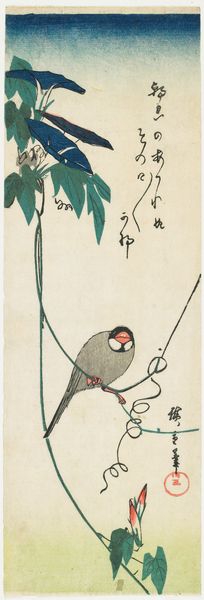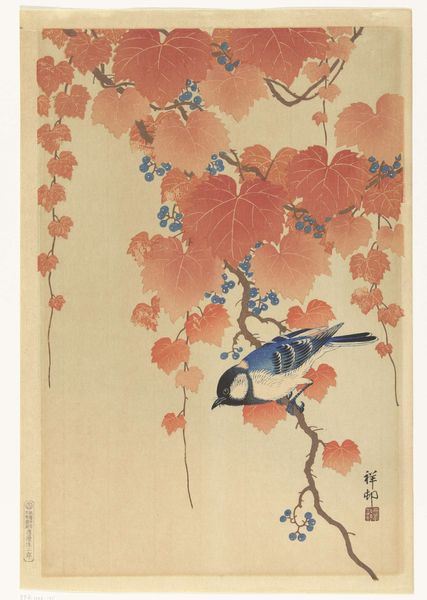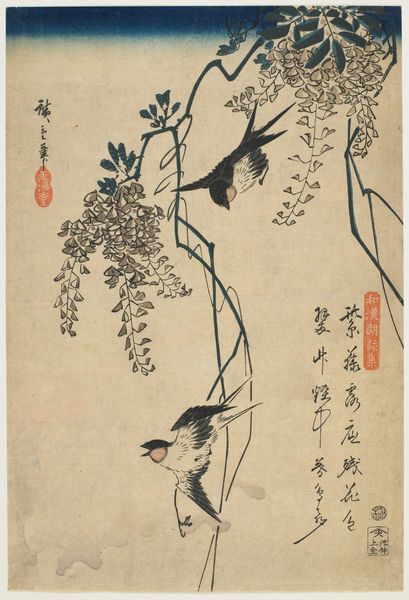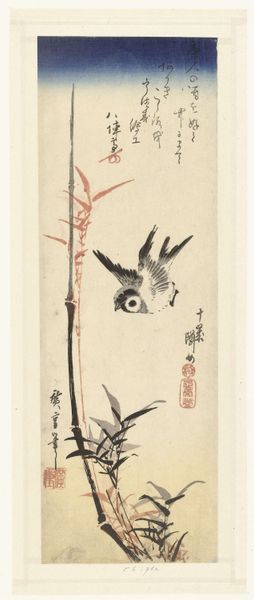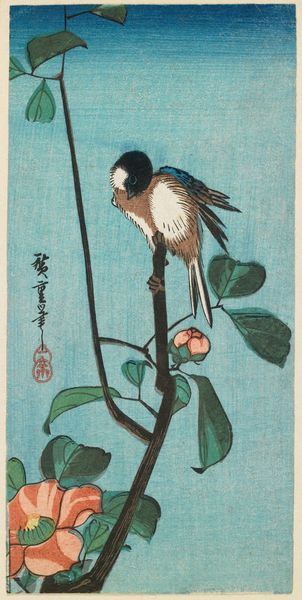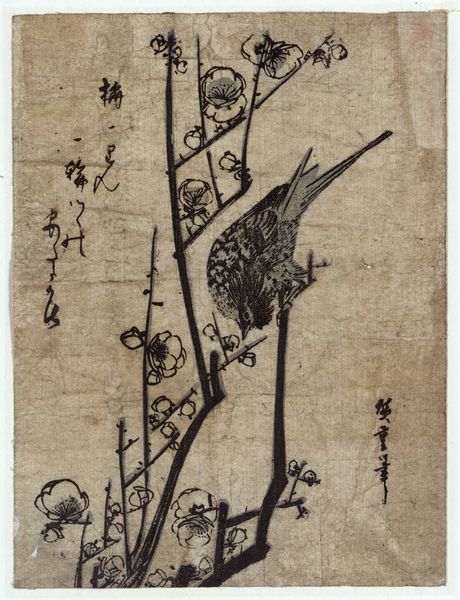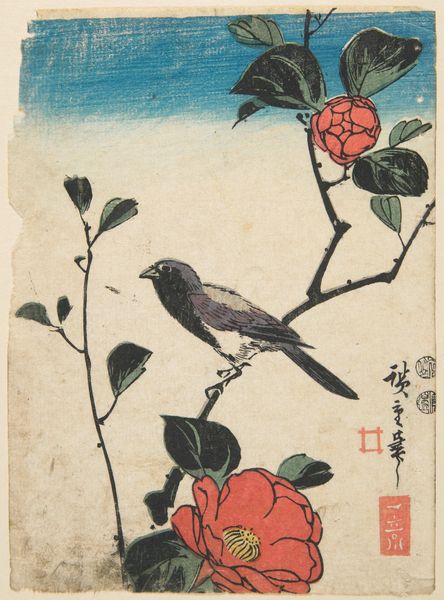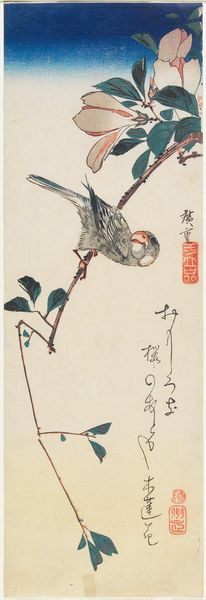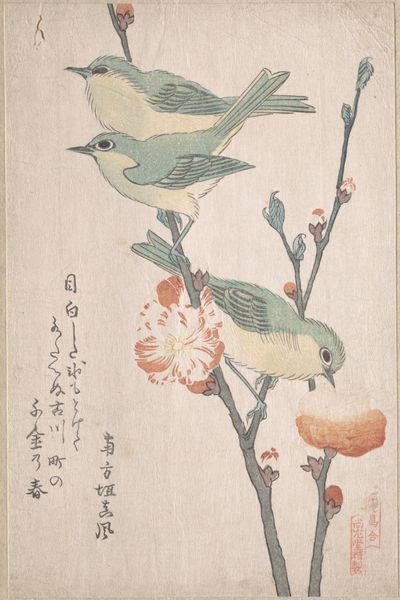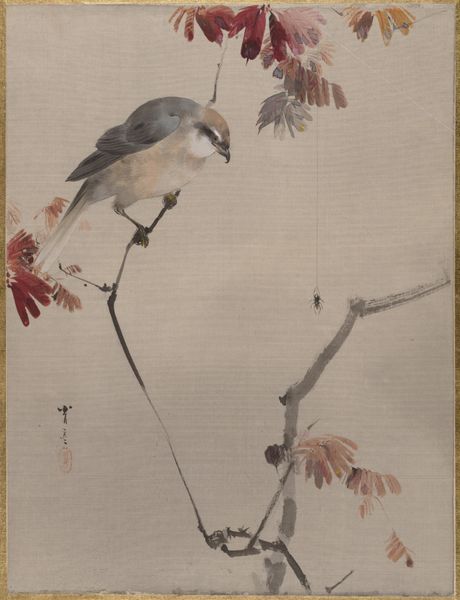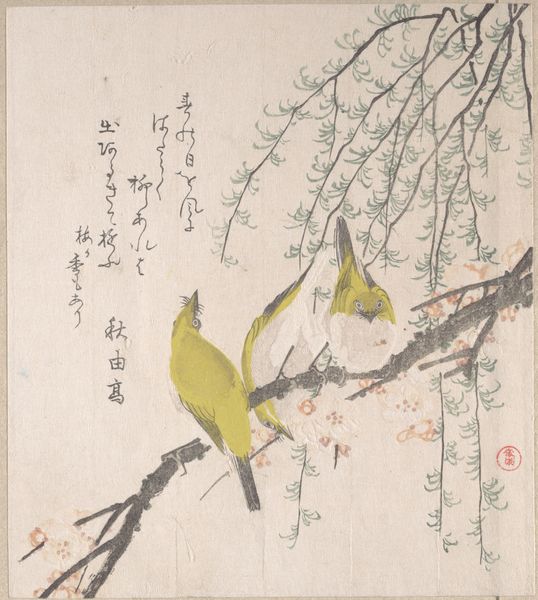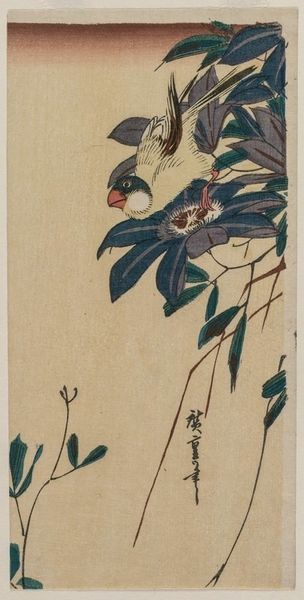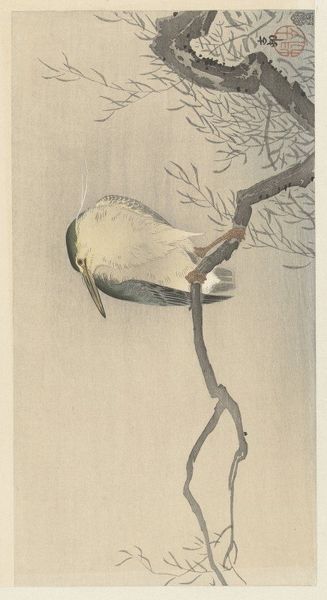
watercolor
#
asian-art
#
landscape
#
bird
#
ukiyo-e
#
figuration
#
watercolor
#
coloured pencil
#
line
#
sketchbook drawing
Dimensions: height 341 mm, width 112 mm
Copyright: Rijks Museum: Open Domain
Editor: So, here we have Utagawa Hiroshige's "Bird and Blue Morning Glory," likely from the 1830s, a watercolor print now at the Rijksmuseum. It’s such a simple image, but the bird perched on the vine feels so alive. How do you interpret this work within its cultural context? Curator: That’s a keen observation. Hiroshige's work reflects the rise of ukiyo-e as a popular art form, embraced by a growing merchant class with new leisure time and disposable income. Prints like this weren't just art; they were commodities in a booming market fueled by woodblock printing technology and a thirst for imagery accessible to the masses. Think of it as pre-Instagram fleeting beauty—the bird, the bloom, caught in a perfect, reproducible moment. How do you think its availability influenced the reception of nature imagery? Editor: That makes sense. Maybe because these prints were so readily available, people saw and understood nature differently? Like it changed everyday perspectives. Curator: Precisely. Ukiyo-e shaped perceptions of nature and beauty, popularizing certain views and subjects, feeding back into cultural values. These images weren't passive reflections; they were active participants in constructing ideas about the natural world and its place in society. Considering its later place within Western markets too. Do you think the export of prints influenced perceptions of Japan? Editor: It definitely played a role in shaping the West's romantic view of Japan, influencing artistic movements and cultural exchange, sort of forming Orientalism in visual format. Curator: Absolutely. These prints, seemingly simple, were powerful cultural ambassadors, carrying specific messages about Japanese aesthetics and culture, often divorced from their original socio-political contexts. It prompts us to reflect on how art can both reflect and construct cultural identities across borders. Editor: I see, this has been fascinating, reframing this piece in terms of public access and image circulation really opened my eyes. Curator: Mine too, remembering how artworks operate beyond their artistic intent reminds me how complex and deeply interconnected art and cultural understanding truly are.
Comments
No comments
Be the first to comment and join the conversation on the ultimate creative platform.
